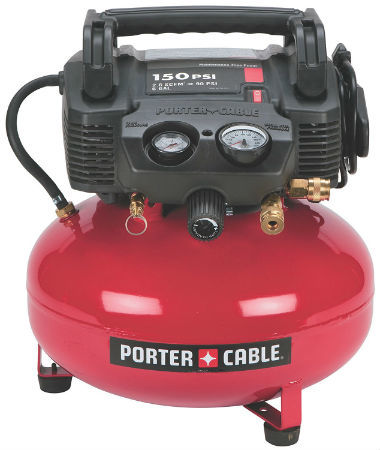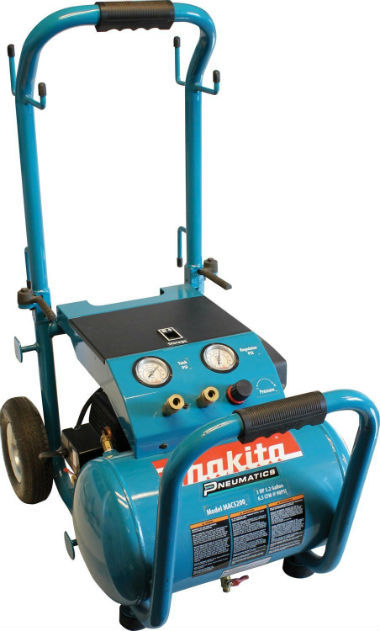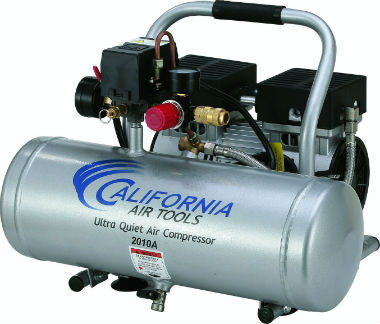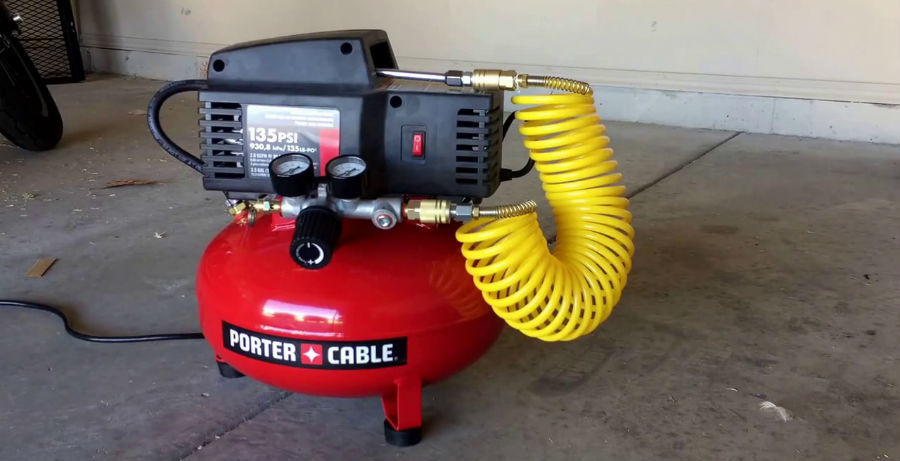
Most of us could use an air compressor around our home for many different types of projects and is why I believe that an air compressor is probably one of the more important tools any homeowner can own. You don't need a whole lot as far as size, capacity and output when looking for a decent air compressor that will do 90% of the things you want to do with.
I wanted to make a little bit more of a comprehensive type of guide that talks about what homeowners need to look for in a compressor and which ones are going to be best for a wide variety of uses. Let's dive in!
What To Look For In An Air Compressor
- A model that has a SCFM of around 2 - 6, that way you can use a pretty wide range of light duty to medium duty tools. You can use heavier duty tools that require more SCFM but intermittently, not constantly.
- Most people will want a compressor that can easily be moved from place to place so look at a weight of around 20-50 lbs. This will vary depending on what you are comfortable lifting, of course. Remember there are compressors that have wheels attached so you could get a little heavier unit (more power usually) and still easily move it around.
- Noise level is something to at least consider and not all compressors are created equal when it comes to this. There are significant differences in the decibal output when comparing different models.
- How heavy is the compressor going to be? Is it going to be unbearable to lug around your home or is it going to be a lighter model that you can easily move from place to place. Worth thinking about.
Portability Is Something To Think About:
There are a whole bunch of different types of air compressors out there but typically a portable type of air compressor is going to be the better choice for most people because it can be moved around from place to place which gives us so much more versatility over a larger, heavier type of compressor.
There are a few different configurations that portable air compressors come by and these don't really affect performance at all but will make a little bit of difference on tank capacity and maneuverability so they are worth taking a look at.
A Highly Rated Portable Compressor:
This Porter Cable compressor (on the right) is one of the highest rated models out there and probably one of the most popular, as well. It has a 6 gallon tank which is on the smaller side but can operate most tools just fine.
It has a SCFM of 2.6 @ 90psi, which is enough for a brad nailer, tire inflator, staple gun, air nozzle and lots of other things. The price is pretty decent too, usually under $200 and even has multiple options to get other accessories in a kit, if you want to go that route.
What Are You Going To Be Running?
Like I mentioned earlier, you can run a whole bunch of different tools off of one single air compressor so you might want to think about what some of those tools will be and go from there.
Smaller Tools: Smaller tools will typically run off of any type of air compressor, in general because they require so little air to run and are usually not constantly running so it won't drain the tank too fast. When using some of the smaller tools, just about any air compressor will do so you don't really need to pay attention to tank capacity, SCFM output for anything like that
Larger Tools: These will require more SCFM to operate and having a higher SCFM compressor would help out. You would want a compressor that has a SCFM of between 4 and 6 to operate a lot of these tools. Some much larger tools will require even more air than 6 SCFM but are more specialty type of tools and are not included in the "bulk" of the other tools I am talking about, keep that in mind.
Here is an example chart of some of the tools that most people would use and the required CFM of each type of tool. I didn't see an air inflation tool on here, which is about 2 CFM.
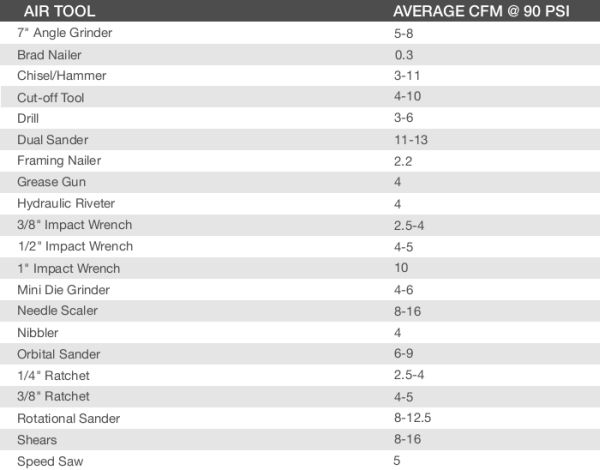
cpocampbellhausfeld.com
Recommended SCFM For Most Tasks
I would recommend getting a compressor that has between 2 and 6 SCFM to tackle most jobs adequately. If you want something that will have a little more "umph" then stay in the 4-6 SCFM range. It is important to note that these will cost a bit more for compressors that can put out that kind of air flow.
A Higher SCFM Compressor:
This Makita Model is one of the better compressors out there that has a pretty high SCFM (6.5 CFM at 90 PSI) and I would still consider this to be a very portable model, so dragging it around will be quite easy.
Considering the output of this model, the price really isn't that bad at all, coming in between $300 and $400.
Another cool thing about this Makita compressor is the rack on the back where you can store your hoses, which is always an added hassle, or at least an extra step having to carry the compressor where you want it and then going back and grabbing the hoses.
This is worth checking out if you want a compressor that has that added amount of power for your air tools.
Should I Worry About PSI?
PSI really doesn't make too much of a difference nowadays because most compressors tend to have a maximum PSI of 120 - 160, which is plenty to operate 98% of the tools out there.
How Loud Is It Going To Be?
Noise is something that most people don't think about much when it comes to compressors, they generally think that they are all equally noisy, I would assume. There are certain models that produce significantly less noise than others though and are ideal if you want something that will not be as aggressive on your ears.
A Very Quiet Compressor You Might Consider...
This California Air Tools compressor is very quiet compared to some of the other models. It claims that it runs at around 60 decibals, which is quieter by more than 30 decibals compared to some of the other compressors out there.
This still has enough SCFM to tackle most tools and tasks (2.20 CFM at 90 PSI) when looking at the 1 hp model. A great portable, quiet and strong contender.
Tank Capacity, Does It Matter?
The tank size really won't matter for home use type air compressors that much and really only make a difference for tools that you will use on a consistent basis. Most tools, you will end up using intermittently anyways, so this is not that big of an issue.
A good example of a tool that would use air consistently would be airing up a tire. A truck tire would take a lot more air than a passenger car would but a compressor that has a SCFM of 2 or more and a 6 gallon tank would do the job just fine but would probably have to run constantly during the entire process. If you had a compressor with the same SCFM and a 30 gallon tank, then you might be able to fill the tire without the compressor ever kicking on. See the difference?

